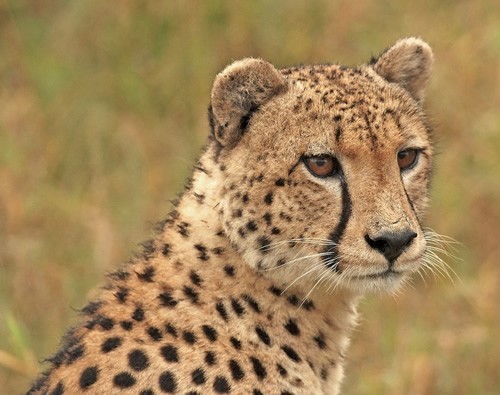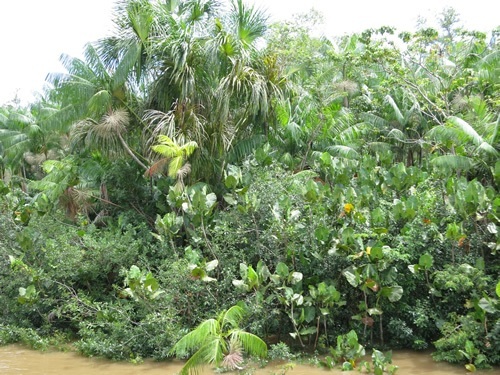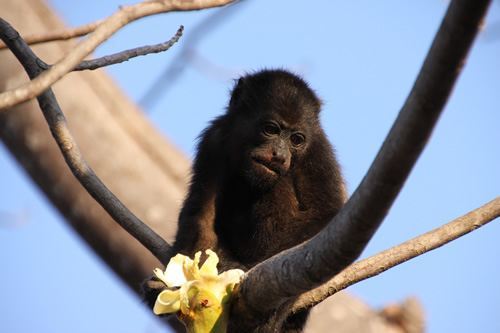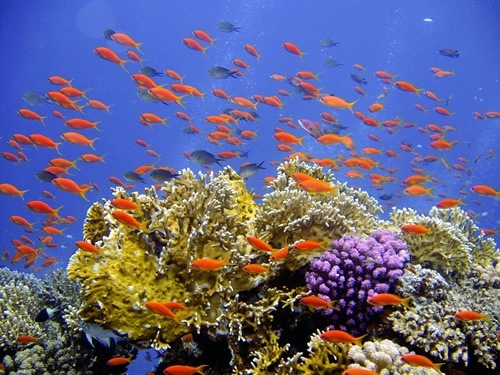Responsible Travel in Action
How to Preserve Endangered Wildlife and Ecosystems
By Volker Poelzl

|
|
Cheetahs are among the many endangered species rapidly disappearing across the globe.
|
Traveling responsibly encompasses many different aspects, just as the notion of what is considered "responsible" evolves over time. Generally, such travel involves respect for local cultures and customs, minimizing our impact on local ecosystems, and helping to preserve endangered ecosystems such as the Amazon rainforest. During my extensive travels, I have confronted one issue that affects almost every country and every ecosystem on our planet: no matter what continent you visit or where you chose to travel, there are dozens of plant and animal species threatened by extinction.
Today we are confronted with a mass extinction of species that is unprecedented in the recent history of our planet. From the orangutans in Indonesia to the gorillas in Rwanda (recent progress!), from the California condor to the vultures of India, from Asian tigers to African cheetahs, animals, plants and sensitive ecosystems are threatened everywhere. Since the banning of DDT in North America, we have seen the amazing comeback of the bald eagle, but elsewhere success stories of rebounding animal populations are rare. The most common reason is the loss of a habitat due to human expansion and expanding farm or grazing land, but poverty, malnutrition, and greed are also common factors that contribute to the decreasing diversity of animal life on earth. Where work is scarce and cash is hard to come by, locals often resort to hunting, poaching and illegal logging simply to survive.
The Challenges of Wildlife Preservation Today
Supporting efforts to save threatened wildlife and ecosystems is a small but still very important contribution to preserving the biodiversity on our planet. Many NGOs working to protect wildlife rely on endowments and donations for their operations, but visitors to wildlife parks also play an important role in helping to preserve endangered ecosystems. Their fees help protect the park boundaries, pay for research, and provide income to local communities. Supporting wildlife sanctuaries and preserves is especially important in developing countries, which often lack resources to adequately fund reserves and protect them against poaching, logging, illegal mining, and invasion by settlers.
In addition to external threats, many preserves and parks are faced with the difficulties of “managing” wildlife, since wild animal population in large reserves cannot easily be controlled. When they are protected, they tend to multiply until their own numbers threaten their food source. In some cases animal species expand into neighboring areas with a larger density of human settlement. The challenge of a well-managed reserve is not just to protect the animals, but also to reconcile the interests and needs of the local population with preservation policies and management plans. I witnessed first-hand the conflict of interest between wildlife preservation and human settlement in the Brazilian Amazon. I visited a remote nature preserve that was established to protect the endangered population of caimans. The region is also home to small communities that live off subsistence farming, fishing, and the collection of forest products such as Brazil nuts and various palm fruits. Due to the ban on hunting, the caiman population has recovered dramatically over the past decade to the point where the caimans now threaten the lives of the local settlers. Through the mediation of a friend I visited the reserve with the political delegation of a state representative trying to gather facts about caiman attacks on humans and possibly lifting the ban on caiman hunting. Just one of many examples where human interests clash with recovering animal populations. Despite these challenges, these reserves deserve our support, since they play an important role in the preservation of endangered species.

|
|
The Brazilian rainforest, habitat to so much wildlife (including caimans), is vanishing quickly.
|
Finding Legitimate Tour Operators
Selecting a tour operator, local NGO, or eco-lodge that truly operates in the interest of a nature preserve or wildlife park is not easy. Much of what is touted as ecotourism is actually little more than nature sightseeing. Responsible preservation practices should include a feasible management plan that has as a goal the long-term survival of threatened ecosystems, but also ensures that guides and park rangers are knowledgeable and sufficiently trained such that they can guide visitors without disturbing or scaring wildlife.
In Belize, I went on a daylong boat trip on the Monkey River in Paynes Creek National Park to observe wildlife in the hope of spotting resident howler monkeys. I photographed more birds and reptiles in a shorter time period than ever before, and I managed a few great shots of howler monkeys, but in hindsight, this trip was little more than a sightseeing tour. Although we picked up a local guide at the river mouth, most of my fees went to the tour operator in the town of Placencia, several miles up the coast, which contributes little to the preservation of the national park. Traveling upriver, the skipper slowed down whenever we sighted wildlife, but our local guide resorted to banging his machete against tree trunks and making loud growling sounds to attract the attention of the howler monkeys. We soon saw several howler monkeys crashing through the dense foliage, but I asked myself about the sustainability of this practice. How many tour groups can the monkeys tolerate each day before moving along to less disturbed parts of the park?

|
|
Howler monkeys are a popular attraction in many parks in Central and South America, but just like many other tropical species, they suffer from loss of habitat.
|
Also in Belize, I visited a protected marine reserve a few miles off the coast, where visitation was only possible with commercial outfitters. Just like at other marine parks I had visited in the South Pacific Islands, the Caribbean, and South America, the tour operators were not particularly interested in the sustainability of the reserves. It was all about attracting marine wildlife (in part by feeding) so that tourists would be satisfied. But many coral reefs around the world are threatened by overfishing, pollution, and global warming, and are in great need of protection and a management plan that emphasizes the sustainability of tourism in these reserves.

|
|
Coral reefs are extremely fragile environments and are threatened all over the world.
|
In India, on the other hand, I visited an elephant reserve in the state of Orissa with a very different management model. Visiting the park was only possible with a permit from the park headquarters. No private outfitters were allowed to operate inside the park. We paid our entrance fee to the park, including our overnight stay at an observation tower, and we also hired a local guide. Instead of a tour operator, we paid our guide directly for his services. He was a young man from a village inside the elephant reserve, and he was eager to improve his English and tell us all he knew about the elephants and the reserve. The reasonable entrance and guide fees directly benefited the local population and the elephant reserve, and I did not mind paying an additional US$50 for a photography permit.
The Amazon region faces similar challenges. There are many tour operators that offer jungle and river tours, but most of them do little to help preserve endangered ecosystems and animals. Travelers concerned about wildlife conservation should make sure that they choose an organization or tour operator that is truly dedicated to the preservation of the local ecosystem. In Manaus, Brazil’s largest city in the Amazon, you will find dozens of hawkers touting jungle trips, but they are all commercial enterprises counting on the ignorance of foreign visitors. There are very few areas near Manaus that merit the designation of nature reserve. To avoid taking a commercial tour on an Amazon tributary that offers little more than a staged encounter with wildlife (usually with fake “wild” Indians showing off snakes etc.) you need to do some research and plan your wildlife excursion ahead of time.
Some eco-lodges in the Amazon are situated in private preserves and are very expensive, but there are many low-cost options as well. NGOs working on government-owned preserves just do not have the same advertisement budget as luxurious eco-lodges and are a little more difficult to discover. Private reserves with their luxurious eco-lodges are attractive to travelers who demand the highest degree of creature comforts, but I have found that lodges in wildlife preserves and national parks also offer a level of comfort that is quite acceptable to foreign visitors. I spent a few days at a Biological reserve in the Brazilian Amazon along the Bolivian border, and the “guest suites” at the reserve headquarters were quite pleasant. There was no air conditioning and no electricity after bedtime, but the spacious suites had large windows covered with mosquito screens and included a kitchenette, a bathroom, and simple mahogany furniture. There are many nature reserves throughout the Amazon where NGOs are active to help protect endangered species such as turtles, river dolphins, manatees, and rare monkeys. Most of these reserves operate lodges, where visitors can stay for a reasonable fee.
Visiting Protected Areas
Contrary to what many travelers think, visiting a wildlife or nature reserve does not have to be expensive. There are many ways to view wildlife and explore threatened ecosystems. Luxury tours, safaris, and eco-lodges are only a few of the options available to visitors. Instead of joining an outfitter, you could travel by bus or boat on your own, hire a local guide and pay for lodging, food, and entrance fees on your own. You will be surprised by how much less you will spend. Also keep in mind that many local NGOs that work to preserve and protect threatened wildlife and ecosystems charge much less for tour packages and guided visits than commercial outfitters or private wildlife reserves.
Traveling responsibly does not mean that you have to spend a lot of money to visit a reserve or lodge, only that you travel in a manner that supports local preservation efforts. In Brazil, I visited the Serra dos Veadeiros National Park, a few hours north of the capital Brasília. Instead of booking a tour, I traveled to the park on my own and hired a local guide to explore the unique savanna ecosystem, beautiful gorges, and waterfalls. Most of the Park’s guides were once diamond prospectors in the area who had been retrained as tour guides, and I knew that my fees helped maintain the basic visitor infrastructure and provide employment for the locals.
On my travels around the globe I have found it quite easy to include a visit to a wildlife reserve or National Park. Almost every country has protected areas that allow access to foreign visitors, and many countries work hard to gain a reputation of being green, and encourage foreigners to explore the natural beauty of their country. Although access is sometimes difficult and time-consuming, there are many protected areas reasonably close to cities with airports, good roads, and public transportation. With smart planning and research at home and a little extra time at your destination, you can find a way to visit a national park and wildlife preserve that best meets your interests and fits your travel budget.
Volker Poelzl is a Living Abroad Contributing Editor for TransitionsAbroad.com. On his travels in over 40 countries he has visited dozens of wildlife preserves and National Parks.
|
